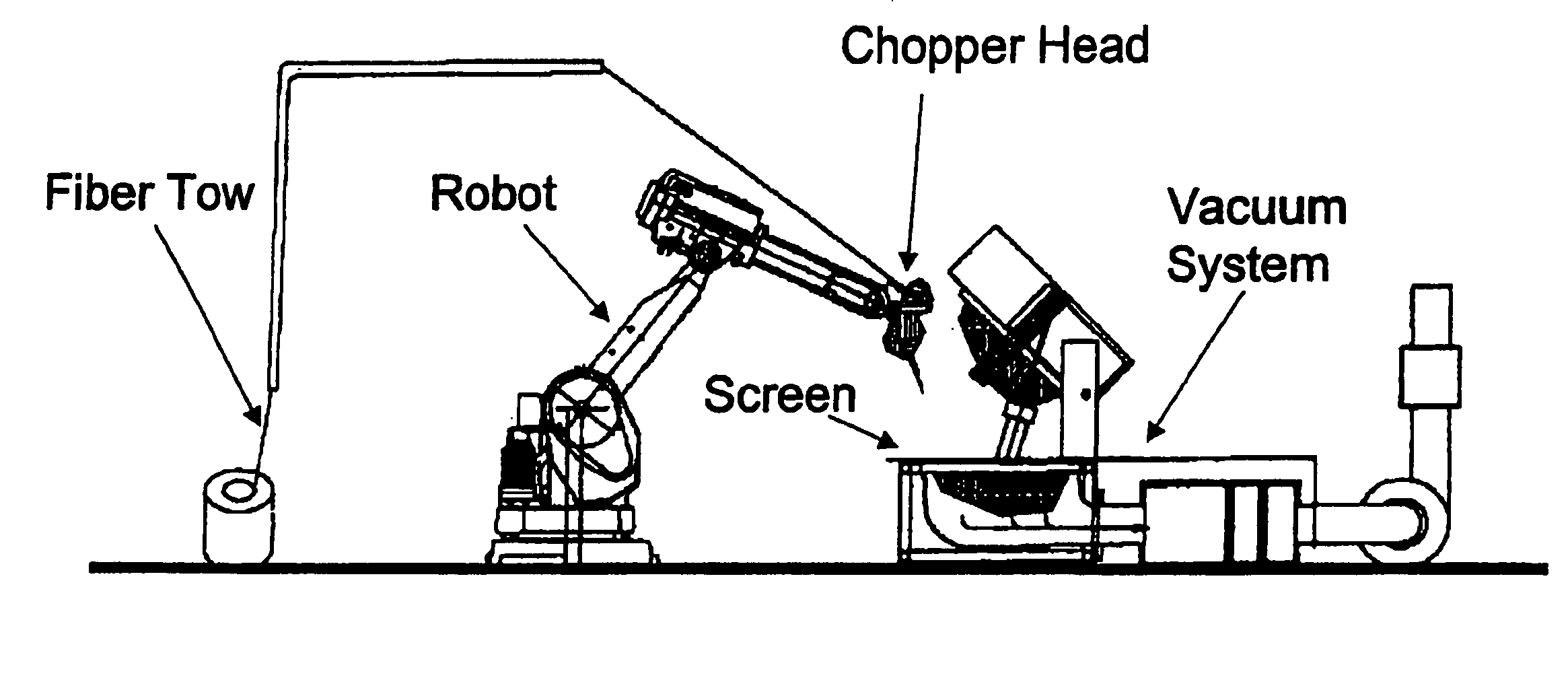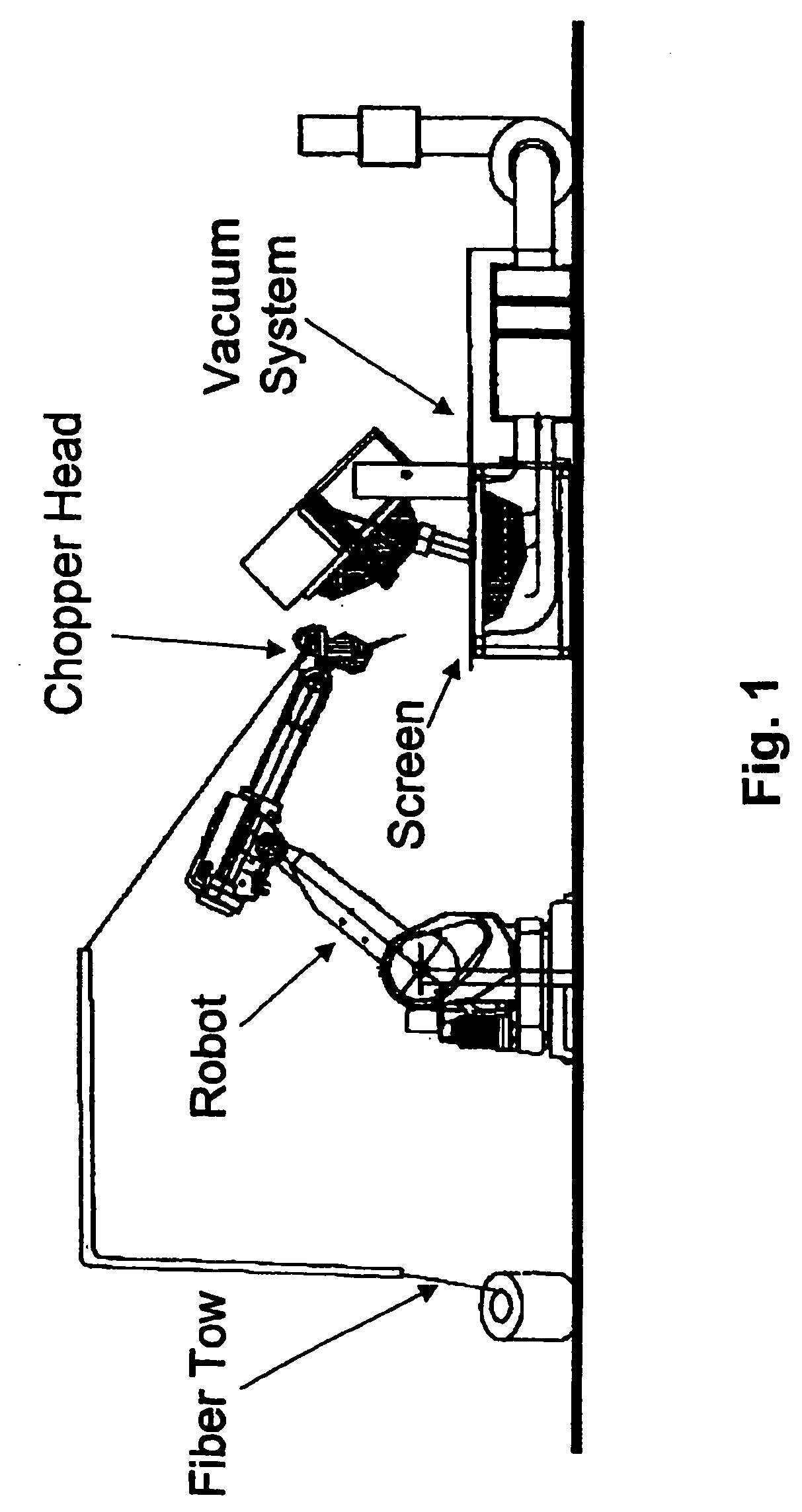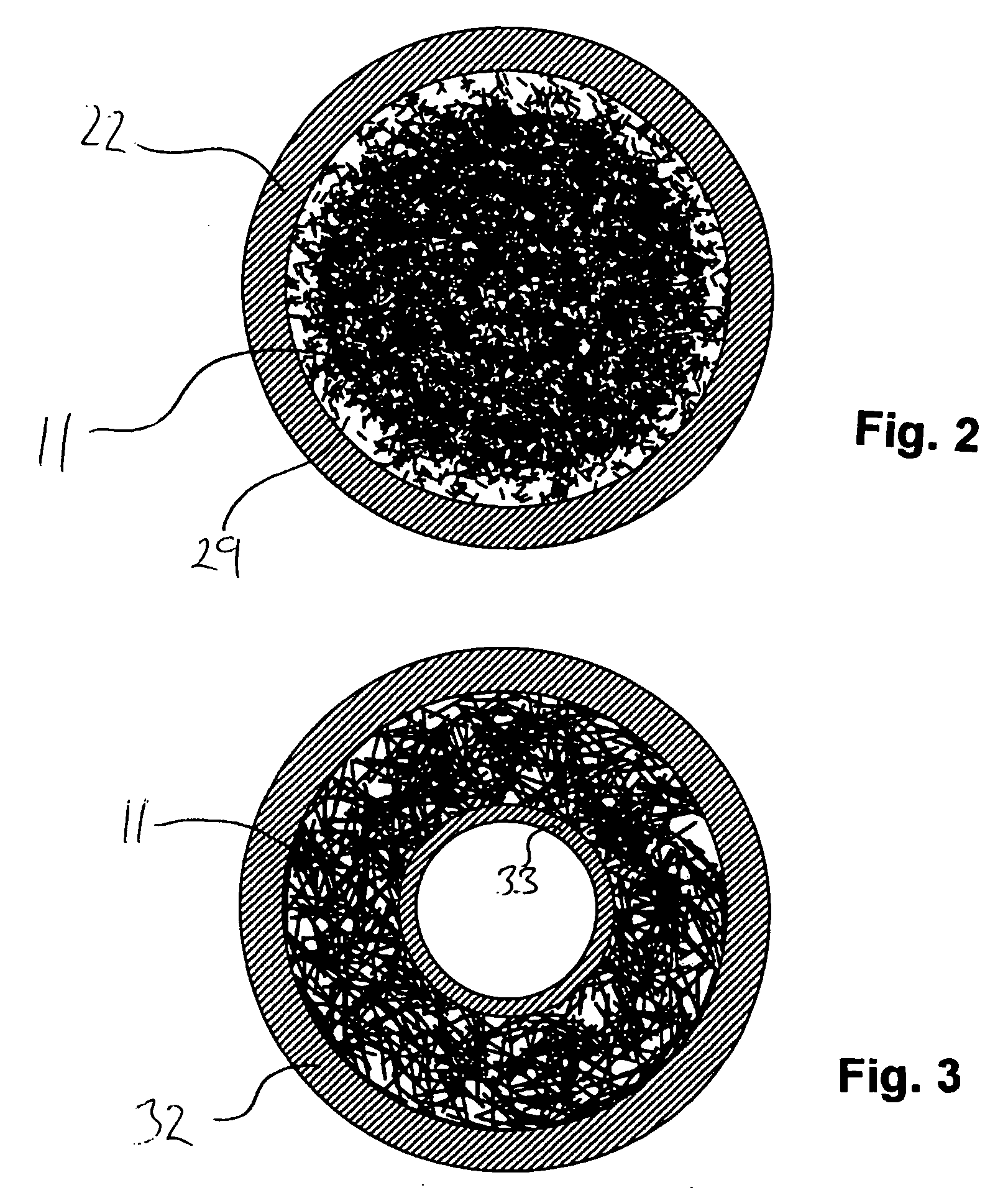Manufacture of thick preform composites via multiple pre-shaped fabric mat layers
a technology of fabric mats and composites, applied in the field of preform parts production, can solve the problems of large disadvantages of lom processes for fabricating composite structures, use only of thin-walled or shell-type composite structures, and inability to manufacture preform for thick composite parts, etc., and achieve the effect of increasing interlaminar connectivity
- Summary
- Abstract
- Description
- Claims
- Application Information
AI Technical Summary
Benefits of technology
Problems solved by technology
Method used
Image
Examples
Embodiment Construction
[0024]This invention provides a process for the manufacture of preforms for thick structural composite parts. In accordance with this invention, individual layers of fiber mats with defined microstructure are produced by means of a fiber spray system. The individual fiber mats are subsequently stacked to make a multi-layer composite preform. The individual fiber mats are interlinked, for example by needling of the three-dimensional preform or by the use of tabs and lugs built into the individual fiber mats or by virtue of three-dimensionality in the individual fiber mats themselves. The fiber preform is densified by resin infiltration. The novel manufacturing apparatus, comprising one or more fiber spray-up and layer assembly stations, also constitutes an aspect of this invention.
[0025]The present inventive system for the fabrication of preforms for thick, three-dimensional composite parts includes various components. One component of this invention is a robotic process for chopping...
PUM
| Property | Measurement | Unit |
|---|---|---|
| thickness | aaaaa | aaaaa |
| density | aaaaa | aaaaa |
| thickness | aaaaa | aaaaa |
Abstract
Description
Claims
Application Information
 Login to View More
Login to View More - R&D
- Intellectual Property
- Life Sciences
- Materials
- Tech Scout
- Unparalleled Data Quality
- Higher Quality Content
- 60% Fewer Hallucinations
Browse by: Latest US Patents, China's latest patents, Technical Efficacy Thesaurus, Application Domain, Technology Topic, Popular Technical Reports.
© 2025 PatSnap. All rights reserved.Legal|Privacy policy|Modern Slavery Act Transparency Statement|Sitemap|About US| Contact US: help@patsnap.com



